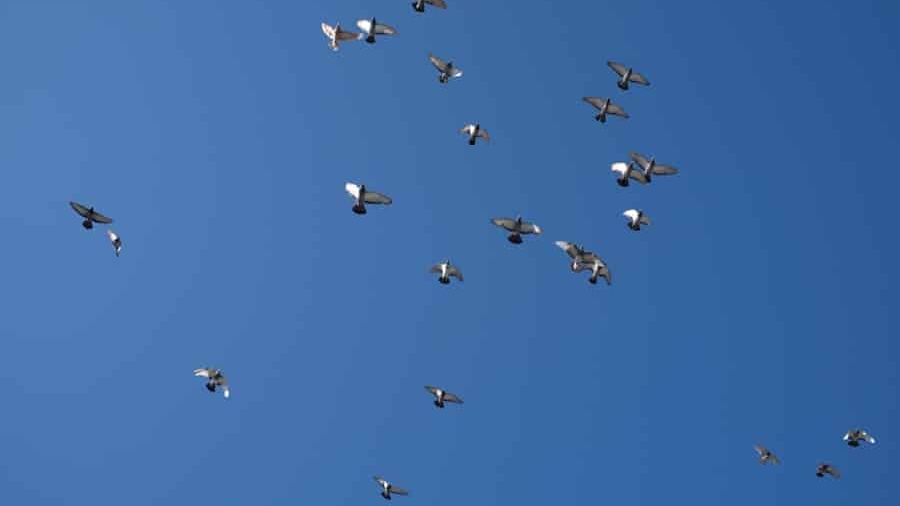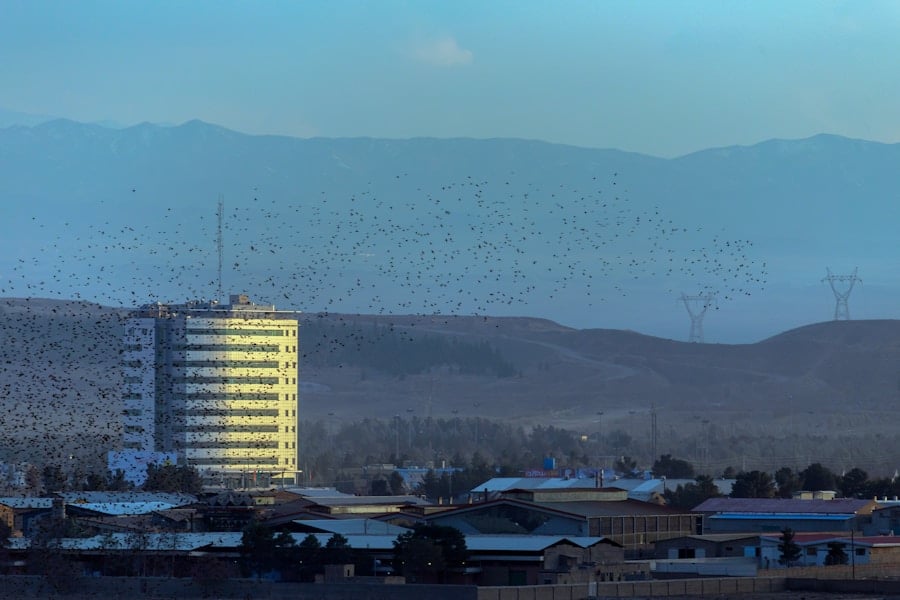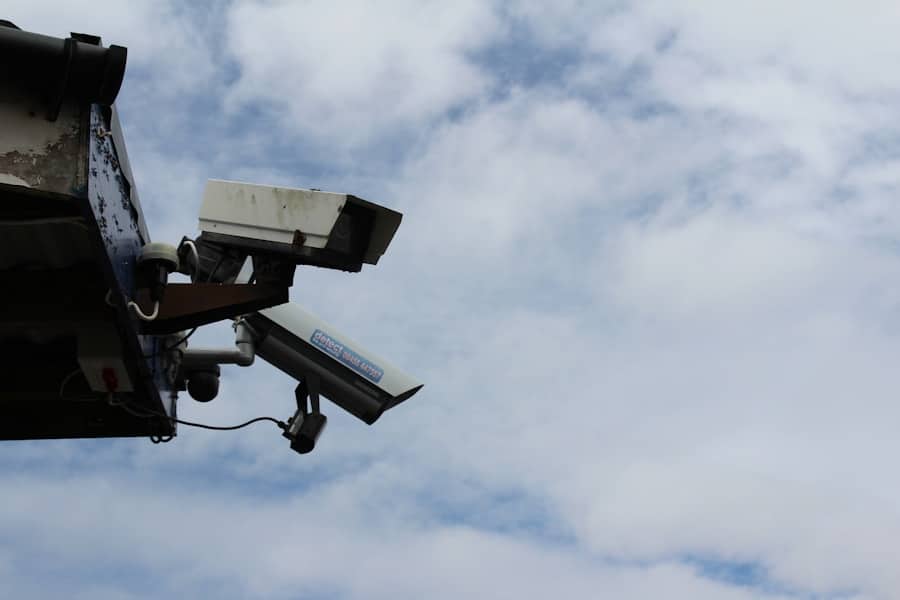The advent of drone technology has revolutionized various sectors, and surveillance is no exception. Swarm drones, which operate in coordinated groups to perform tasks, have emerged as a significant advancement in this field. The concept of swarm intelligence, inspired by the behavior of social insects like bees and ants, allows these drones to communicate and collaborate effectively.
This capability has led to their increasing adoption in surveillance operations, where traditional methods often fall short. The ability to cover vast areas quickly and efficiently makes swarm drones particularly appealing for monitoring large-scale events, natural disasters, or even urban environments. The rise of swarm drones can be attributed to several factors, including advancements in artificial intelligence, miniaturization of technology, and improvements in battery life.
These developments have made it feasible to deploy multiple drones simultaneously, enabling them to share data in real-time and adapt their strategies based on the information they gather. For instance, during large public gatherings or protests, swarm drones can provide comprehensive aerial views, allowing for better crowd management and safety assessments. Their ability to operate autonomously while still being remotely controlled adds another layer of flexibility that traditional surveillance methods cannot match.
Key Takeaways
- The rise of swarm drones in surveillance has revolutionized the way large-scale surveillance projects are conducted, allowing for more efficient and comprehensive monitoring of vast areas.
- Advantages of using swarm drones for large-scale surveillance include their ability to cover large areas quickly, their cost-effectiveness, and their ability to provide real-time data and analysis.
- Challenges and limitations of swarm drones in surveillance projects include the need for advanced coordination and communication systems, potential security risks, and the need for skilled operators and analysts.
- Applications of swarm drones in large-scale surveillance range from border security and disaster response to wildlife monitoring and crowd control, showcasing their versatility and effectiveness in various scenarios.
- Future developments and innovations in swarm drones for surveillance are expected to focus on enhancing autonomy, increasing payload capacity, and improving data processing and analysis capabilities to further improve their effectiveness in surveillance operations.
Advantages of Using Swarm Drones for Large-Scale Surveillance
One of the most significant advantages of swarm drones is their ability to cover extensive areas with remarkable efficiency. Unlike a single drone that may have limitations in terms of range and endurance, a swarm can distribute its workload across multiple units. This capability allows for real-time data collection over large geographical areas, making it ideal for applications such as border security or wildlife monitoring.
For example, a swarm of drones can be deployed to monitor a national park, providing continuous surveillance that can detect poaching activities or illegal logging operations. Moreover, swarm drones enhance situational awareness through their collective intelligence. By sharing data among themselves, they can create a more comprehensive picture of the environment they are monitoring.
This feature is particularly beneficial in emergency response scenarios, where timely information can be critical. In the event of a natural disaster, a swarm can quickly assess damage, locate survivors, and relay vital information to rescue teams on the ground. The ability to adapt their flight paths based on real-time data further increases their effectiveness in dynamic situations.
Challenges and Limitations of Swarm Drones in Surveillance Projects
Despite their numerous advantages, the deployment of swarm drones in surveillance is not without challenges. One major concern is the complexity of coordinating multiple drones simultaneously. As the number of drones in a swarm increases, so does the potential for communication breakdowns or collisions.
Ensuring that each drone can effectively communicate with others while avoiding obstacles requires sophisticated algorithms and robust software systems. The risk of technical failures or malfunctions can lead to significant operational setbacks. Another limitation is the regulatory landscape surrounding drone usage.
Many countries have stringent laws governing airspace and drone operations, which can hinder the deployment of swarm technology for surveillance purposes. Issues such as air traffic management and privacy concerns complicate the integration of swarm drones into existing frameworks. Additionally, the reliance on GPS for navigation poses challenges in environments where signals may be weak or obstructed, such as urban canyons or densely forested areas.
These factors necessitate ongoing research and development to create more resilient systems capable of operating under various conditions.
Applications of Swarm Drones in Large-Scale Surveillance
Swarm drones have found applications across various sectors, demonstrating their versatility in large-scale surveillance operations. In agriculture, for instance, farmers are increasingly using swarms to monitor crop health and assess irrigation needs. By flying over vast fields, these drones can collect data on plant health through multispectral imaging, allowing farmers to make informed decisions about resource allocation and pest control.
This application not only enhances productivity but also promotes sustainable farming practices. In urban environments, swarm drones are being utilized for traffic monitoring and management. By deploying a fleet of drones equipped with cameras and sensors, city planners can gather real-time data on traffic patterns and congestion levels.
This information can be invaluable for optimizing traffic flow and reducing emissions. Furthermore, during large public events such as concerts or sports games, swarm drones can provide security personnel with live feeds from multiple angles, enhancing crowd safety and enabling rapid response to any incidents that may arise.
Future Developments and Innovations in Swarm Drones for Surveillance
The future of swarm drones in surveillance is poised for significant advancements as technology continues to evolve. One area of focus is the integration of machine learning algorithms that enable drones to analyze data autonomously. This capability could allow swarms to identify patterns or anomalies without human intervention, streamlining the surveillance process further.
For example, a swarm could be trained to recognize specific behaviors indicative of criminal activity or environmental threats, enhancing their effectiveness in real-time monitoring. Additionally, advancements in battery technology are expected to extend the operational range and endurance of swarm drones significantly. Innovations such as solar-powered drones or those utilizing energy-efficient propulsion systems could allow swarms to operate for longer periods without needing frequent recharging.
This would be particularly beneficial for long-term surveillance projects where continuous monitoring is essential. Furthermore, the development of more sophisticated communication systems will enhance coordination among drones, enabling them to work together seamlessly even in complex environments.
Ethical and Privacy Considerations in the Use of Swarm Drones for Surveillance
Establishing Clear Guidelines
To address these concerns, it is crucial to establish clear guidelines governing the use of swarm drones in surveillance operations. Transparency about how data is collected, stored, and used is essential to maintain public trust. Additionally, implementing measures such as anonymizing data or limiting access to sensitive information can help mitigate privacy risks.
Engaging with Communities
Engaging with communities and stakeholders in discussions about the ethical implications of drone surveillance will also be vital in shaping responsible policies that balance security needs with individual rights.
Responsible Policies
Ultimately, the goal is to develop responsible policies that balance security needs with individual rights, ensuring that the benefits of this technology are realized while protecting the privacy and civil liberties of individuals.
Case Studies of Successful Large-Scale Surveillance Projects Using Swarm Drones
Several successful case studies illustrate the effectiveness of swarm drones in large-scale surveillance projects across various domains. One notable example occurred during the 2020 Tokyo Olympics when a fleet of drones was deployed to monitor crowds and ensure safety protocols were followed amid the COVID-19 pandemic. The drones provided real-time aerial footage that allowed organizers to manage crowd density effectively while adhering to health guidelines.
Another compelling case study took place in wildlife conservation efforts in Africa, where swarms of drones were utilized to monitor endangered species such as elephants and rhinos. By employing drone swarms equipped with thermal imaging cameras, conservationists could track animal movements and detect poaching activities more efficiently than traditional methods allowed.
Regulations and Legal Frameworks for the Use of Swarm Drones in Surveillance
The regulatory landscape surrounding drone usage is complex and varies significantly across different jurisdictions. In many countries, regulations governing drone operations are still evolving to keep pace with technological advancements like swarm capabilities. Authorities must address issues related to airspace management, safety protocols, and privacy concerns while developing legal frameworks that facilitate innovation.
In the United States, for example, the Federal Aviation Administration (FAA) has established guidelines for drone operations but has yet to create specific regulations tailored to swarm technology. This gap presents challenges for organizations looking to implement swarm drones for surveillance purposes. Similarly, European Union regulations emphasize privacy protection but may need further refinement to accommodate the unique aspects of swarm operations.
As drone technology continues to advance rapidly, ongoing dialogue between regulators, industry stakeholders, and the public will be essential in shaping effective policies that balance innovation with safety and ethical considerations.
If you are interested in emerging technologies like swarm drones, you may also want to check out this article on how Wired.com focuses on emerging technologies. This article delves into the latest advancements in technology and how they are shaping our world. It provides valuable insights into the future of technology and how it can be utilized in various industries, including surveillance projects powered by swarm drones.
FAQs
What are swarm drones?
Swarm drones are a group of drones that work together in a coordinated manner to achieve a common goal. They are programmed to communicate with each other and act as a unified system.
How are swarm drones used in large-scale surveillance projects?
Swarm drones are used in large-scale surveillance projects to cover a wide area and gather real-time data. They can be equipped with cameras, sensors, and other technology to monitor and collect information from the environment.
What are the advantages of using swarm drones for surveillance?
Using swarm drones for surveillance offers several advantages, including the ability to cover large areas quickly, adapt to changing conditions, and operate in challenging environments. They can also provide a cost-effective and efficient solution for surveillance projects.
What are the challenges of using swarm drones for surveillance?
Challenges of using swarm drones for surveillance include the need for advanced coordination and communication systems, potential regulatory and privacy concerns, and the risk of technical malfunctions or security breaches.
What industries or sectors can benefit from using swarm drones for surveillance?
Industries and sectors that can benefit from using swarm drones for surveillance include law enforcement, border security, infrastructure monitoring, agriculture, and environmental conservation.



